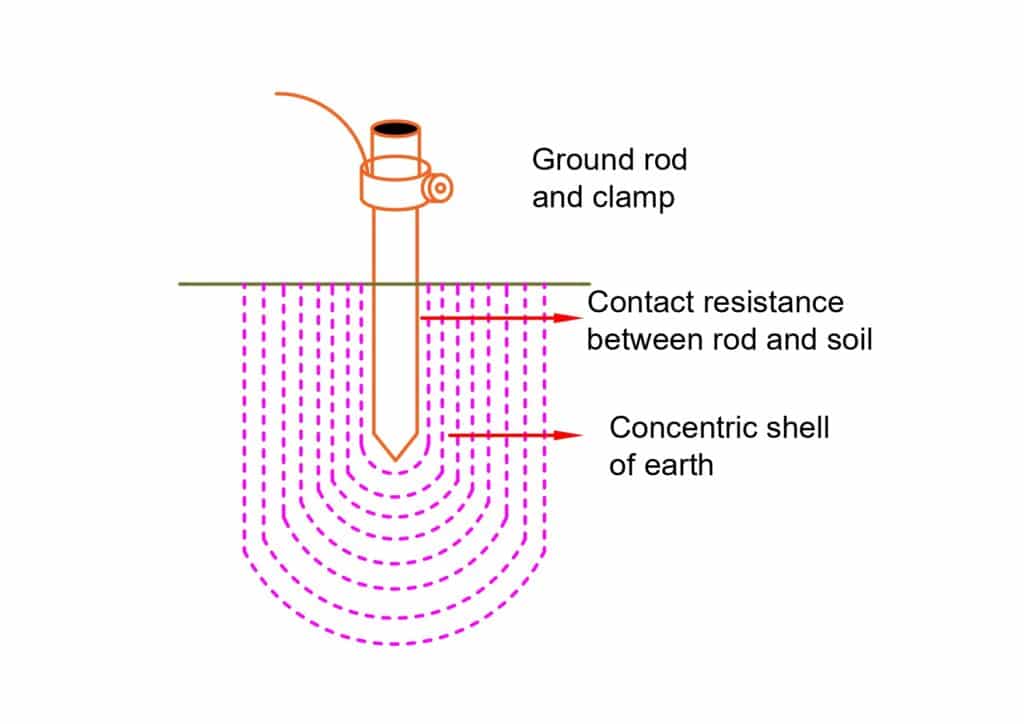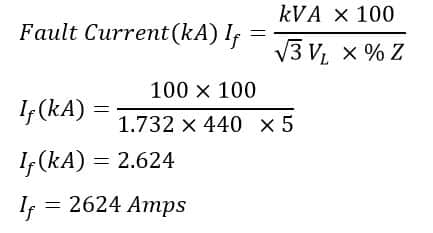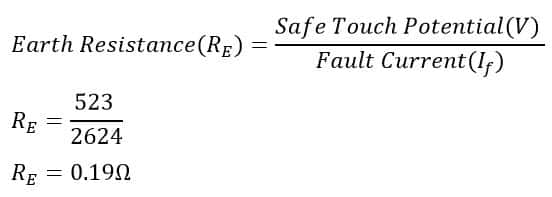The soil resistivity directly affects the earth resistance. The earth resistance increase with an increase in the soil resistivity. In this article, we will discuss the impact of soil resistivity on earth resistance.
Let us first understand what is soil resistivity and how it plays an important role in effective grounding. The current flows through the earth are maximum if the soil resistance is low.
What is Soil Resistivity?
The soil resistivity is the measurement of the soil resistance of the sampled soil. The resistivity of the soil depends on many factors such as the depth of the soil, moisture, chemical content, and temperature. Soil resistivity values can range from 500 Ω cm with large amounts of electrolytes to over 1 million Ω cm in sandy dry soil.
What is Earth Resistance?
The resistance offered by the earth electrode is known as the earth resistance. The magnitude of the current flowing from the electrode to the earth depends on the earth resistance. Thus, the lesser is the resistance, the more will be current.
How does the current flow in the soil?
When a fault occurs in the system. the live phase gets connected to the earth point. As a result, the current starts flowing through the earth electrode to the surrounding soil inside the earth pit. The earth fault current flows in a series of concentric shells, as given below.

The concentric shells near to electrode have lesser area and hence it has larger resistance. Each successive shell has more area and thus has lower resistance to earth fault current. The concentric shell at a large distance from the earth electrode carries the maximum current and the current density is minimum because of the larger area.
Factors that Affect the Earth Resistance
The following factors affect the earth resistance.
- The resistance of the earth electrode
- Contact resistance between Earth surface
- Soil Resistivity
The most important factor that affects earthing resistance is soil resistivity. Therefore, it is important to check the resistivity of the soil before making the earth pits for ensuring effective earth fault protection of the electrical equipment.
The soil resistivity depends on the following factors.
- Moisture content in the soil–Moisture tends to increase soil conductivity. A greater moisture content in the soil is desired for the grounding system.
- Grain Size
- Amount of the salt dissolved in the water of the soil
- Closeness of packing
- Chemical composition of the soil
- Soil temperature- Temperature is especially important in areas with colder climates. The resistivity of the soil increase if the temperature falls below freezing temperature. At below-freezing points even have more detrimental effects on the grounding system because the soil or cement-based fill material can solidify.
- Soil Type– Soil types with high organic content are hygroscopic in nature and they can hold moisture for a longer period of time, and it is considered good conductor. Contrary to this, sandy soil loses moisture faster and its resistivity is high. Whereas, sandy soils will lose moisture faster and have lower amounts of electrolytes. The rocky soil is the worst soil for grounding systems as it does not have moisture at all.

Moist soil has a good amount of moisture in it and it is suitable for earthing systems. The land with dry sand, limestone, granite, and rocky ground has high resistivity and must be avoided for earthing systems. The soil such as wet marshy ground, loamy soil, clay, and sandy land with loam mixed is good for earthing systems.
What happens if the soil resistivity is high?
The high resistivity or low conductivity of the soil impedes the flow of current and a large voltage develops across the earth electrode and soil. This will result in higher voltage ( step or touch potential) on the grounding system. The higher voltage developed in the grounding system due to higher soil resistance may cause an electric shock to the person working at the earth pit.
The soil testing must be done before installing any type of grounding system.
Why is soil Resistivity important?
Before site selection for the grounding system, the soil resistivity test must be done because the soil is the basic building block of the grounding system. The soil resistivity is high for a rocky area, and as a result, the earth fault current will be not able to quickly pass into the ground and may cause damage to equipment. The risk of electrocution caused by a rise in touch potential is also there if soil resistivity is high. If soil resistivity is high, additional measures can be taken to reduce the resistivity to ensure a good grounding system.
What to do if soil Resistivity is High?
The soil resistivity can be decreased in areas where soil resistivity is high, including rocky and sandy soil by adding conductive enhancement materials in the soil to overcome the problem of high soil resistivity. These products can be referred to as “ grounding” or “earthing” enhancement materials.
Permissible Earth Resistance Value as per Indian Standard
As per the Indian electricity law, the following base values are considered for specifying the permissible earthing resistance values.
- Safe touch potential – 523 Volts
- The maximum current in the fault condition
The earth resistance can be calculated by Ohm’s law.

Let take an example of 100 kVA, 440volts, 5 % impedance transformer, the fault current( If) is;

Earth resistance is;

To get this low earthing resistance value, the earthing system has a very high cost, and therefore, a nominal earth resistance value of 1 Ω is considered for practical purposes.
The permissible value of earth resistance is listed in the below table.
| Facilities | Earth Resistance Values(Ω) |
| Power Stations | 0.5 |
| 33 kV Stations | 2.0 |
| EHT Stations | 1.0 |
| DTR Structures | 2.0 |
| Tower Foot Resistance | 10 |
These resistance values can be taken as the reference for the permissible values. However, we should try to get the minimum resistance value. There exists moist soil deep below the ground level and it has lower earthing resistance, therefore we can deep drive the earth electrode to get stable low resistance. This way, we can get low earth even if the upper layers of the soil are dried out.
It may happen that we do not get low earth resistance even after inserting the electrode deep inside the soil because of high soil resistivity. In such cases to improve the earth resistance value to the desired level, we can use charcoal, salt, or chemical earthing compounds to bring the earth resistance value down to the permissible level.